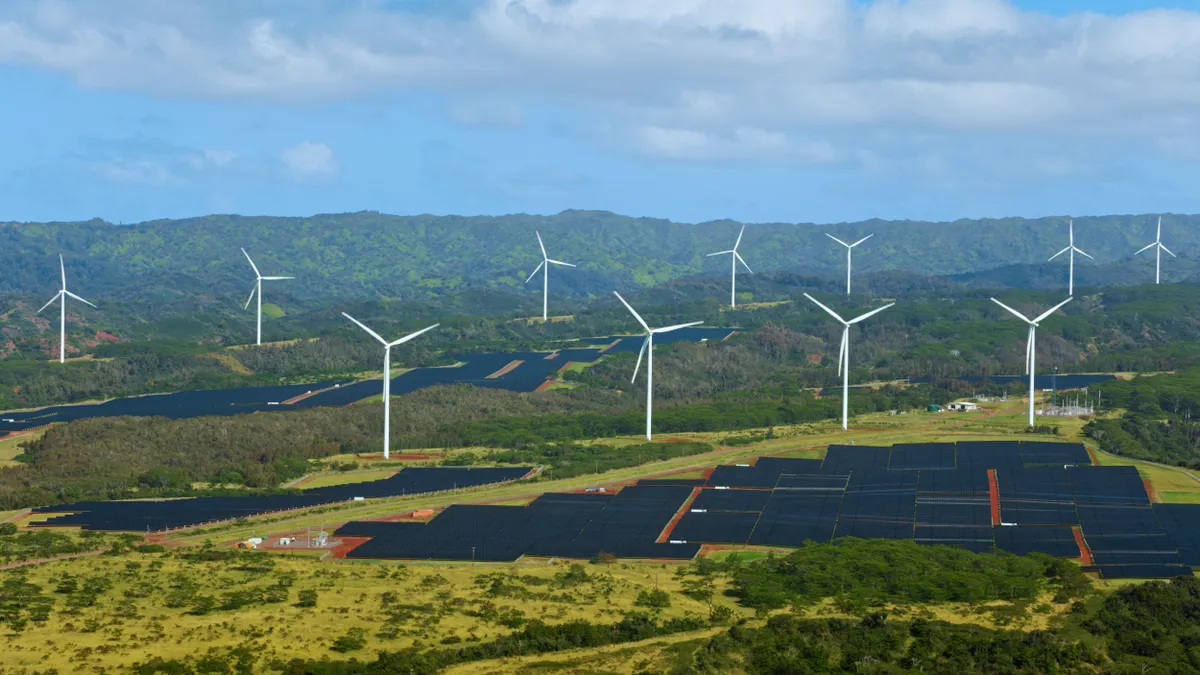Jonathan Chanis manages New Tide Asset Management, which invests in commodities, listed equities, fixed income and currencies. He does not engage in short selling and he currently holds positions in SPDR XLU and several U.S. natural gas producers.
Almost a decade ago, people talked about Hawai‘i as a “glimpse of the promise and problems” of turning the electric grid green. Hawai‘i was a “postcard from the future.” Unfortunately, the postcard was ignored and Hawai‘i has become the posterchild for an expensive, unreliable and environmentally suboptimal generation and distribution system.
At 44 cents per kilowatt-hour, Hawai‘i residents pay the highest electric rates in the nation. Incredibly, this rate exceeds California’s second highest rates by almost 30% and is nearly triple the national average. And due to bad generating capacity buildout decisions and a monopolized wholesale generation market for firm power, Hawai‘i is plagued by electric outages. According to Department of Energy data, the state ranks 20th in the nation for reliability. To keep the system from completely failing, Hawaiian Electric Company regularly resorts to rolling blackouts and pressuring customers to conserve power.
Independent power producers have attempted to help HECO overcome these problems, but the company and the state’s Public Utilities Commission have not been welcoming. A prime example of this is Honua Ola Bioenergy, which owns a fully built renewable energy facility on Hawai‘i Island and has long sought a power purchase agreement with HECO. Honua Ola converted an abandoned sugar mill into a bioenergy facility that turns the island’s abundant non-native eucalyptus trees and other invasive plants into firm power. Bringing the facility online would increase power generation competition, lower energy costs, improve grid reliability and lessen the island’s reliance on imported fossil fuels. HECO and Honua Ola originally signed a power purchase agreement but HECO later canceled it citing alleged construction delays. Honua Ola, though, alleges that HECO is blocking the project to maintain monopolistic control of the firm power-generation market.
The power system’s troubles are not limited to maintaining an overly concentrated wholesale power generation market. In 2023, a wildfire at Lahaina caused approximately $5.5 billion in property damage and took more than 100 lives. HECO agreed to pay $1.99 billion to cover its share of the resulting tort claims, and on Aug. 9, it issued a “going concern notice.” This means that within 12 months HECO may not have sufficient money to pay its bills.
A Wall Street Journal review of regulatory records revealed that HECO knew as early as 2011 that it needed to upgrade its infrastructure, especially its increasingly unsafe utility poles. Replacing poles, burying power lines, monitoring vegetation and cutting back foliage when appropriate substantially reduces ignition risk from vegetation-power line contact. HECO just did not spend the money to do this. Concerned about blowback from ratepayers and legislators who are already worried about energy affordability, the Hawai‘ia PUC has been reluctant to push HECO to spend what was necessary to rehabilitate the grid and protect public safety.
A deeper cause of Hawai‘i’s troubles comes from its misguided decarbonization strategy. In 2015, Hawai‘i was the first state in the nation to set a legally required deadline (2045) to obtain 100% of its electricity from renewable sources. However, Hawai‘i still obtains almost 75% of its electricity from petroleum and it remains the most petroleum dependent state. To meet its aggressive renewable generation goals, Hawai‘i must rapidly phase out fossil fuel generation and build solar and wind generation, as well as other forms of renewable energy such as biomass and geothermal generation. The problem is that Hawai‘i, like several other states, is taking fossil fuel generation out of the system faster than it is bringing on alternative generation.
Customers have reacted rationally to this abysmal situation by furiously adding solar rooftop generation to their houses. On the five islands HECO serves, 32% of single-family homes have solar installations. But this has only made the power system’s problems worse. Integrating all this distributed, intermittent power into the grid is difficult, and like all solar power, it tends to be produced at a time of day when power demand is lower. HECO has been promoting battery storage solutions, but the technology for long-duration electricity storage is still very undeveloped. Hawai‘i simply does not have sufficient generating capacity to cover the required load, especially during overcast weather.
HECO and the PUC could have taken, and still can take, steps to build an electric system that is more fit for purpose. As early as 2012, Hawai‘i considered importing liquefied natural gas. Gov. Josh Green, D, recently raised the issue again. Authorizing Honua Ola to begin operations also would deliver immediate relief to Hawaiian consumers. Wishful thinking about the speed of the energy transition and a desire to protect a monopoly will only punish consumers and adversely affect the people HECO and the PUC are supposed to serve. It is time for this to change.














